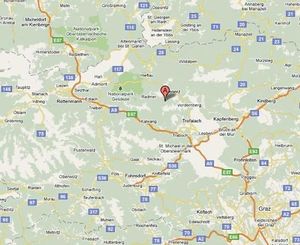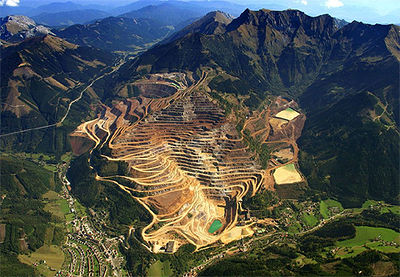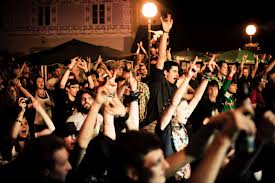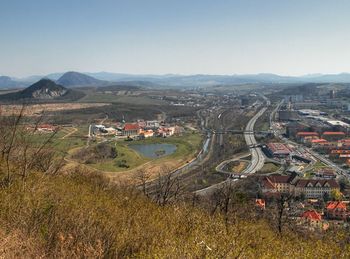Students:Group Four: Robert, Lucie Č, Jana P & Jana M: Difference between revisions
| Line 55: | Line 55: | ||
We have made efforts to examine the current situation of eco-regions in the Czech Republic and we were quite disappointed by the outcome. There is only one that would have “eco” in its name – Ecoregion Úhlava. Its aim is sustainable development of the life of both locals and visitors and maintaining intact nature. But when observing their activities more closely, it seems that they are focused on tourism rather than sustainable development.[http://www.ekoregion-uhlava.cz/node/236 9] When we look at the positive side, there are some environmentally oriented NGO´s as Hnutí Duha or Hnutí Brontosaurus and some other eco centres.[http://www.ekocentra.cz/ekocentra/pardubicky-kraj/ 10] Let´s see if the future brings more environmental projects run by municipalities. | We have made efforts to examine the current situation of eco-regions in the Czech Republic and we were quite disappointed by the outcome. There is only one that would have “eco” in its name – Ecoregion Úhlava. Its aim is sustainable development of the life of both locals and visitors and maintaining intact nature. But when observing their activities more closely, it seems that they are focused on tourism rather than sustainable development.[http://www.ekoregion-uhlava.cz/node/236 9] When we look at the positive side, there are some environmentally oriented NGO´s as Hnutí Duha or Hnutí Brontosaurus and some other eco centres.[http://www.ekocentra.cz/ekocentra/pardubicky-kraj/ 10] Let´s see if the future brings more environmental projects run by municipalities. | ||
If I was to say only one thing that we should adopt from the project of Ecoregion Kaindorf, it would be promotion. Their logo with a swallow taking off can be seen all over the region. | If I was to say only one thing that we should adopt from the project of Ecoregion Kaindorf, it would be promotion. Their logo with a swallow taking off can be seen all over the region. | ||
[[File:www.fairtrade.at - 207 × 110.jpg]] | [[File:www.fairtrade.at - 207 × 110.jpg]] | ||
Revision as of 23:17, 30 September 2013

We started our fourth day by moving to Eisenerz, an old mining town in Upper Styria.
Workshop "Fisher Game"
The first activity to take place after our arrival was a ‘Fisher game’. This is a systemic game which aims to unveil problems with the use of common resources and time delays in complex systems.
We found the game to be very interesting and a bit ‘tricky’. For us, the most beneficial aspect of the game was that it (similar to the workshop “Monologue/Dialogue” held in Graz) proved the importance of communication. Before we were allowed to communicate with other ‘fishing enterprises’, the amount of fish had been rapidly decreasing. Once we started to talk to other groups we were able to increase the fish stock again. It worked for two rounds. Then, we somehow stopped ‘negotiating’, which was a crucial mistake as most of the groups started to behave selfishly again.
We realized that if we would be able to communicate more efficiently, we might develop the most effective strategy which Marlene showed us afterwards (no fishing every second year and a fishing 'quota' of 8 % every other year). That constitutes an incentive for us to train our communication skills and try to reconsider our mental models.
Workshop about the challenges of old mining regions
After a very tasty lunch we participated in two presentations about old mining regions in Austria and the Czech Republic. Gerfried Tiffner talked about the city of Eisenerz, its problems and efforts to redesign it. Andrew presented the issues of the Ústí n.L. coal mining region.

It was interesting to engage in the problem of a ‘dying city’ and hear about the various strategies to fight its ‘disease’. We consider the social-psychological dimension of the problem as probably the most difficult one. Convincing old people to leave their homes and resettle and attract youth to stay in the city must be a long and painful process. However, as this has been quite successful so far, we believe that the future of the city is promising. There are good opportunities for tourism and the projects put in place (e.g. Rustfest) seem to be very creative and beneficial.

Andrew told us a lot of remarkable facts about both Czech history and the present which unpleasantly surprised many of us. On the other hand, a few innovative and successful revitalization projects have partly improved ‘the image’ of the coal mining region. We were thinking about the issues of breaching the mining limits. From our perspective, it is useless to destroy other settlements or factories in order to enable mining in the region to continue until 2072 or even 2113. The discussion about energy security is moving forward fast and a gradual abandonment of coal power plants is a probable option to be put in place in future years or decades. Therefore, we are convinced that investments in promoting renewable energy sources and creating new job opportunities in other sectors (together with requalification of people) in the region would be much more sustainable and forward thinking choice.

Visit to the city of Eisenerz
The last activity scheduled on Thursday was a visit to the city of Eisenerz itself. The walk around the town surprised us quite a lot as there were not many signs that would show the problems of the city. Most of the buildings seemed to be in a good condition, although many of them were reportedly vacant. There were also a few nice shops and some interesting historical buildings like a castle, a town hall and a church. We only slightly regretted that we had not managed to visit the mine itself. But never mind, next time we will :-).
Ecoregion Kaindorf
The second day of our field trip we visited the Ecoregion Kaindorf. It is a common project of six municipalities that want to work together applying ecological and sustainable principles. It was founded in 2007 by representatives of Dienersdorf, Ebersdorf, Hartl, Hofkirchen, Kaindorf and Tiefenbach. It aims to become a model region that has a recycling economy and meets its own energy needs out of renewable energy.1
After arrival in Kaindorf, the manager of the region Mag. Joachim Ninaus took care of us presenting the association and its projects to us. In the beginning it seemed to be quite long and dull outline of their activities, but during the presentation we stayed amazed to hear how many interesting and creative ideas and plans they had implemented. We appreciate that we could see some of them with our own eyes. For example the eco charging station for electric vehicles powered by solar panels. During the opening ceremony (2009) some suppliers of electric vehicles also showcased their goods in multi-purpose hall in Kaindorf. It is an example of a project that fulfils more goals. People were attracted by green power filling station, regional companies could get the profit from the purchase and transport in the municipalities became more sustainable. On the other hand, our guide Mr. Ninaus told us that nowadays the station is not efficiently used.2 We could also see a special cycling path – no oil was used for its production. Tree sap was used instead. We thought it was a very interesting idea until we heard the cost of few meters of this natural asphalt. It is several times more expensive than normal asphalt made of oil, so definitely not everyone can afford it.
Amongst other activities of this eco-region is a 24-hour bike race. Its purpose is to point out the problem of climate change and to present bicycles as a useful alternative for short trips. Approximately 1000 cyclists will participate in this race, however there are other events in the town aimed especially at families, such as cycle race for children, tasting of local wine and local specialties, live music, campfire and cycle flea market.3 Another thing that was a bit curious to us, but having educational elements in terms of promoting sustainability, was buying fair trade balls for the team of young football players (we did not even know that it is possible to buy footballs with fair trade mark).4
The key project in the direction of CO2 neutrality is the production of humus. Measures for humus production should be combined in an optimal way to create fertile soils in a short period of time (target is 5 years). A series of humus producing activities are carried out including: zero tillage, permanent green covering and pesticide-free fertiliser. Both Austrian and foreign media presented this project.5 However, what impressed us the most was the replacement of plastic bags for paper bags in all shops in the region. This was also connected with a competition – every household received a free paper bag and collected points for using it in shops. There is a draw carried out three times per year where competitors can win an electric bike.6 In our opinion this project could just as well be presented in the Czech Republic.
This leads us to the question of the applying these ideas in the Czech Republic. We find them very inspirational and interesting, but of course – there must be someone who takes the initiative, e.g. a mayor, some environmental association or citizens. In general, finding such a person or an organization in the Czech Republic is a problem because nowadays the topic of sustainable development is not very popular. The regional efforts are not even supported by the government. We think it is possible to have such projects here, but it will take some time. It is necessary to support environmental education in schools and thus reverse the general idea that environmental activities are something strange or even useless.
In the Czech Republic we have quite poor environmental legislation. It also doesn´t help the improvement of current situation. Practically the only place we can find the term of sustainable development is document called ´Sustainable Development Strategy of the Czech Republic´ and the ´Environment Act of 5 December 1991´ (17/1992 Coll.).7 Section 6 of the Act defines sustainable development as development that preserves the capacity of present and future generations to satisfy their basic necessities of life while not reducing the natural diversity and preserving the natural functions of ecosystems.8 This definition does not fully reflect the three pillars of sustainable development, but focuses mainly on environmental protection.
We have made efforts to examine the current situation of eco-regions in the Czech Republic and we were quite disappointed by the outcome. There is only one that would have “eco” in its name – Ecoregion Úhlava. Its aim is sustainable development of the life of both locals and visitors and maintaining intact nature. But when observing their activities more closely, it seems that they are focused on tourism rather than sustainable development.9 When we look at the positive side, there are some environmentally oriented NGO´s as Hnutí Duha or Hnutí Brontosaurus and some other eco centres.10 Let´s see if the future brings more environmental projects run by municipalities. If I was to say only one thing that we should adopt from the project of Ecoregion Kaindorf, it would be promotion. Their logo with a swallow taking off can be seen all over the region.
